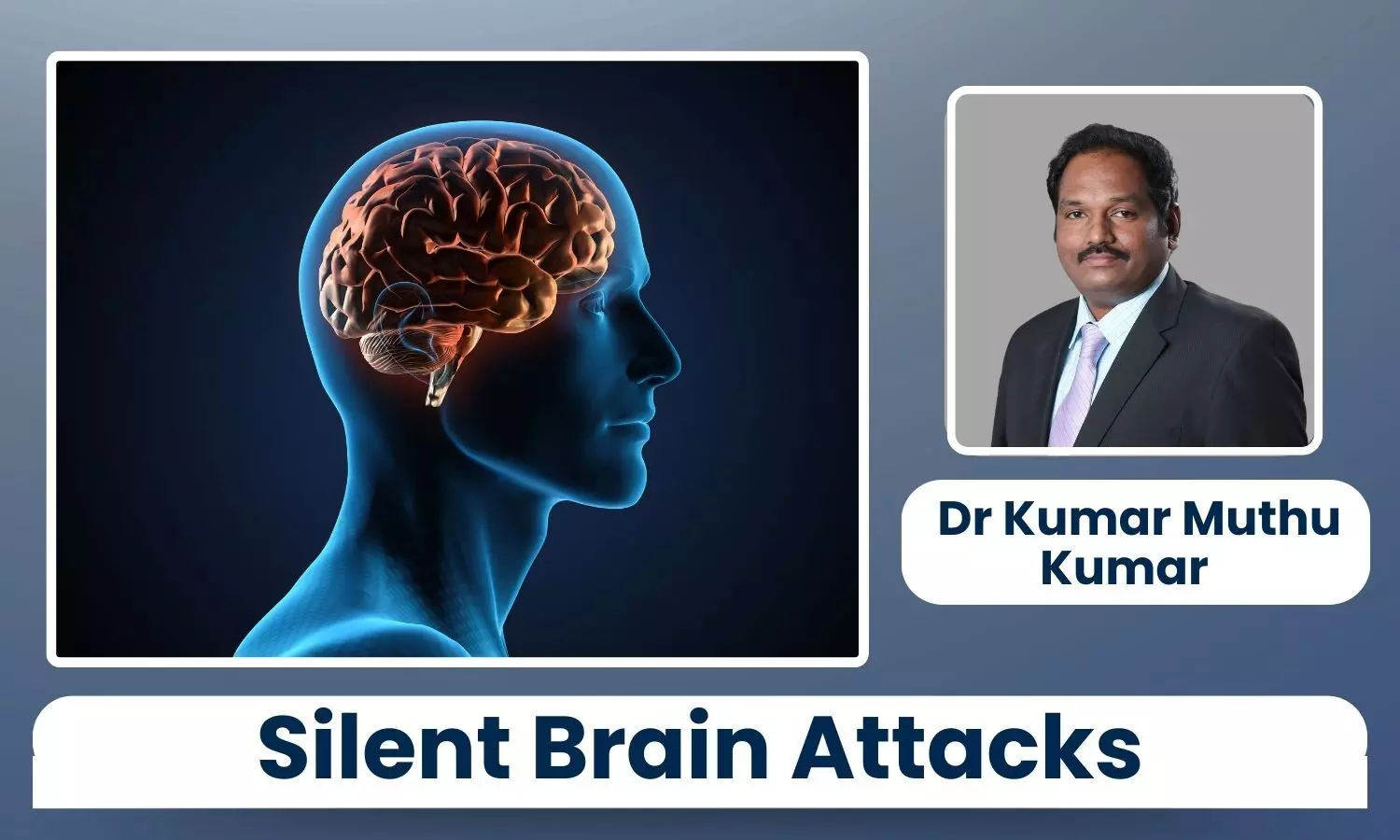Silent Brain Attacks: Emerging Role of Interventional Radiology - Dr Kumar Muthu Kumar

Stroke remains one of the most formidable health threats globally, ranking among the leading causes of death and long-term disability. However, not all strokes strike with dramatic, life-altering force.
Some arrive quietly in the form of Transient Ischemic Attacks (TIAs), or what experts often refer to as “silent brain attacks.” Despite their subtlety, TIAs are major red flags, often signalling a more dangerous stroke on the horizon.
In parallel with growing awareness about TIAs, interventional radiology has emerged as a precision-based, minimally invasive field that is reshaping both stroke prevention and emergency stroke care.
Transient Ischemic Attacks: A Critical Warning
A TIA occurs when there is a temporary blockage of blood flow to the brain, typically lasting only a few minutes and not causing permanent damage. However, the symptoms weakness, numbness, slurred speech, or confusion mirror those of a major stroke and should never be ignored.
Why TIAs Matter:
• 1 in 3 people who experience a TIA will go on to have a full-blown stroke.
• The risk is highest within the first 48 hours following a TIA.
• TIAs offer a golden window for prevention; if properly recognised and treated, they could serve as a lifesaving warning.
Interventional Radiology: Precision in Stroke Prevention
Interventional radiology (IR) is transforming the way we respond to early stroke risk factors, especially in patients who present with TIAs.
Using advanced imaging and microcatheters, interventional radiologists can address stroke-causing conditions in real time, often without the need for open surgery.
Key IR Techniques for Stroke Prevention:
• Carotid Artery Stenting: A narrowed carotid artery is a common cause of TIAs and strokes.
IR specialists can place a stent to restore blood flow and reduce future risk.
• Intracranial stenting: A neurointerventional radiology procedure used to treat narrowed or blocked arteries within the brain.
A small mesh tube called a stent is placed inside the affected artery to widen it, restore proper blood flow, and lower the risk of stroke or its recurrence.
Revolutionising Stroke Treatment: Time is Brain
When a major stroke occurs, every minute counts. Interventional radiology offers tools that directly address the cause of a blocked artery with speed and accuracy.
IR Procedures in Stroke Treatment:
• Mechanical Thrombectomy: Using specialised devices, IR doctors can physically remove blood clots from the brain’s arteries.
When done within the critical window, this can reverse symptoms and save brain function.
• Intra-arterial Thrombolysis: In cases where clot removal is not feasible,
Medications can be directly delivered to the blockage, dissolving it more effectively and reducing systemic side effects.
Bridging the Gap: TIA to Treatment
The danger of TIAs is that many people brush them off. But if identified early, patients can be triaged for life-saving interventional radiology procedures.
• Someone with a TIA from carotid stenosis may benefit from stenting before a stroke occurs.
• A TIA due to a small clot passage might lead to investigations that uncover treatable aneurysms or heart issues.
Looking Ahead: The Future of Stroke Care
As imaging and AI become more integrated into medicine, the role of interventional radiology is expanding.
• Smarter Thrombectomy Devices are in development, potentially allowing treatment even beyond current time limits.
• Image-Guided Navigation using 3D and ultrasound will make brain procedures safer and more precise.
• AI-Driven Diagnosis may soon identify stroke patterns from TIAs in real time, enabling preemptive interventions.
Silent brain attacks are not silent warnings; they are loud alarms. Recognising TIAs and acting swiftly can be the key to preventing a life-threatening stroke.
In this landscape, interventional radiology stands as a beacon of hope, offering minimally invasive, high-precision solutions for both prevention and emergency care.
As technology advances, and as awareness of early signs like TIAs grows, we stand on the cusp of a new era in stroke care — one where fewer lives are lost, and more are reclaimed through timely, targeted intervention.
Disclaimer: The views expressed in this article are of the author and not of Health Dialogues. The Editorial/Content team of Health Dialogues has not contributed to the writing/editing/packaging of this article.


